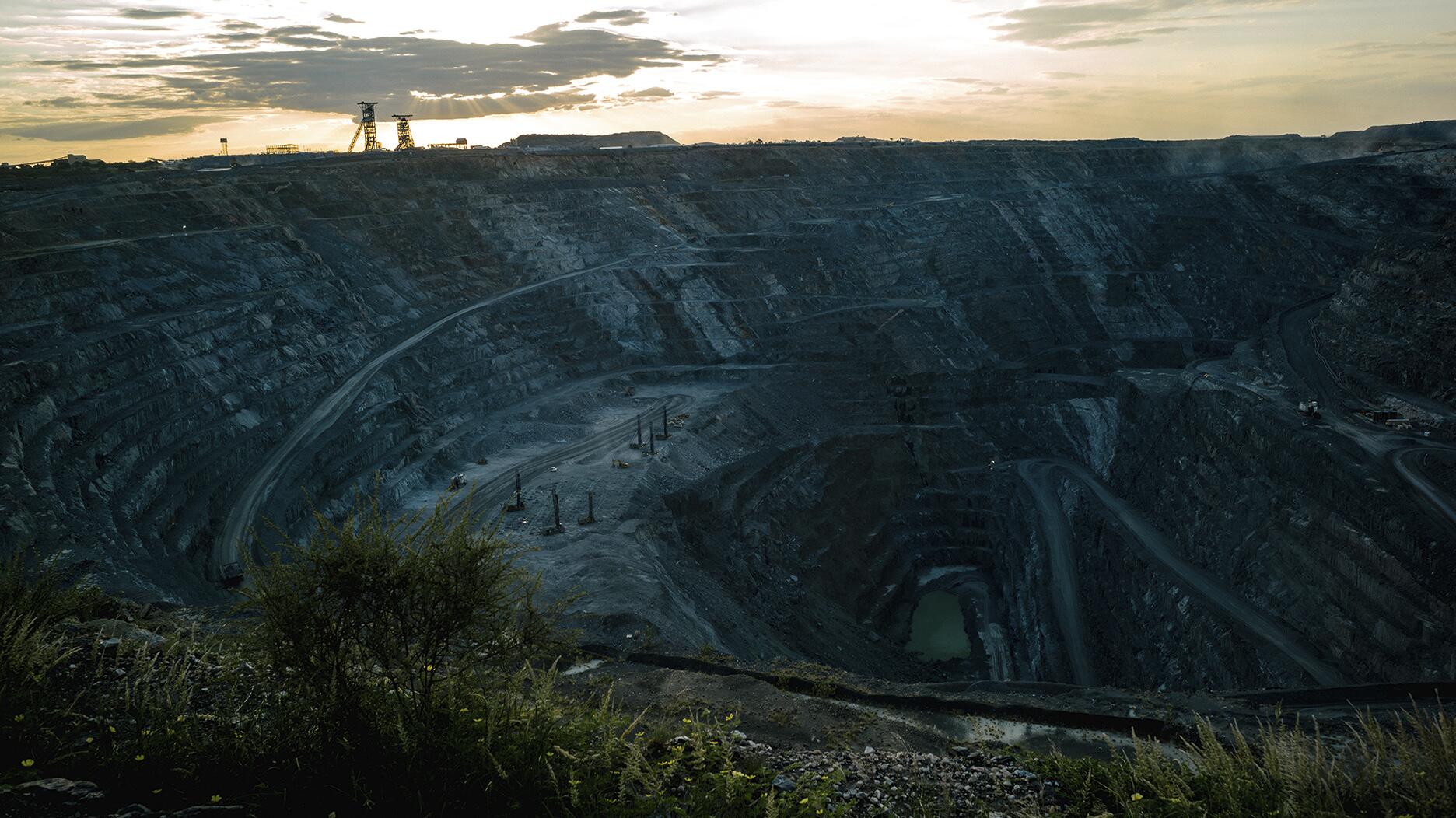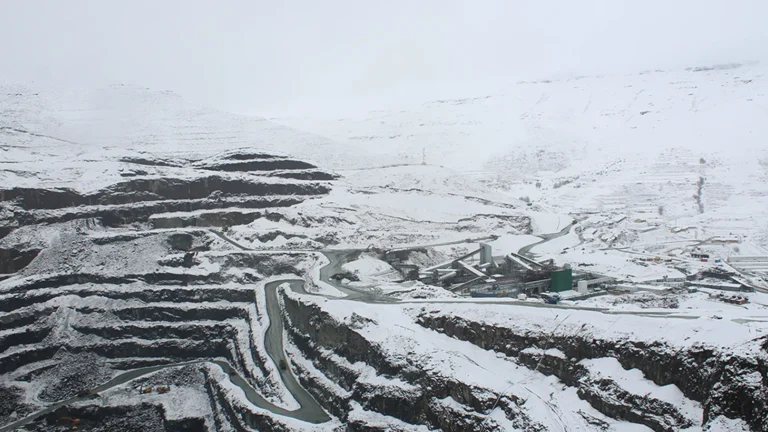South Africa remains one of the world’s leading producers of diamonds. In 2024, Diamond World reported a contribution of 5.8 million carats, valued at around $731 million, according to recent industry reports. This significant output underscores the country’s enduring importance in the global diamond mining sector, driven by a rich history and advanced mining operations that continue to evolve with new technologies and sustainable practices.
In this article, we explore the rich history, key diamond mines, and the significant role of diamond mining in South Africa’s economy and global diamond industry.
Diamond Mining in South Africa
South Africa’s diamond mining history is a fascinating tale that began in 1866-67 when a 15-year-old boy named Erasmus Jacobs discovered a transparent rock on his father’s farm along the Orange River. This discovery marked the beginning of a diamond rush that would transform the country’s economy and position South Africa as a global leader in diamond production.
The initial finds were alluvial diamonds, loose stones found in riverbeds and yellow earth deposits. Over time, prospectors began uncovering diamonds embedded in hard rock, known as blue ground, which was later identified as kimberlite pipe formations. These volcanic pipes became the primary source of diamonds, leading to the establishment of some of the world’s most famous diamond mines.
The South African government has played a pivotal role in regulating and supporting the diamond industry, ensuring sustainable practices and economic benefits for local communities. Major mining companies like De Beers Consolidated Mines and Petra Diamonds have been instrumental in developing the sector.
De Beers grew into the world’s largest diamond producer and distributor, shaping the industry globally. Today, diamond mining remains a vital part of South Africa’s economy, contributing significantly to GDP and providing employment to thousands.
Notable Diamond Mines in South Africa
Premier Mine (Cullinan Mine)
The Premier Mine, renamed the Cullinan Mine in 2003 to celebrate its centenary, is one of South Africa’s most iconic diamond mines.
Located near Pretoria in Gauteng Province, this underground mine is renowned for producing the Cullinan Diamond, the largest rough gem-quality diamond ever found, weighing an astonishing 3,106 carats. Since its establishment in 1902, the mine has yielded over 750 stones exceeding 100 carats and is the only significant source of rare blue diamonds in the world.
Owned by Petra Diamonds, the Cullinan Mine continues to operate with advanced underground mining techniques, contributing significantly to South Africa’s diamond output.
Finsch Mine
Situated in the Northern Cape, the Finsch Mine is another major contributor to South Africa’s diamond production. The Finsch Diamond mine has been in operation since 1967. Finsch is an underground mine located within a kimberlite pipe similar to those found at Cullinan.
It has a reputation for producing high-quality diamonds and remains one of the country’s largest producers. The mine operates with a focus on sustainability and community engagement, aligning with the broader goals of the South African diamond industry.
Venetia Mine
Located in the Limpopo Province, the Venetia Mine is the largest diamond mine in South Africa by production volume. Operated by De Beers, Venetia produces over 4 million carats annually through open-pit and underground mining operations.
Established in 1992, the mine has become a cornerstone of De Beers’ South African operations and is critical to the company’s global supply chain. Rigorous environmental management and social responsibility programs support Venetia’s mining activities.
Kimberley Mine (The Big Hole)
The Kimberley Mine, famously known as the Big Hole, holds a special place in diamond mining history. Located in the Northern Cape, Kimberley was the site of the first major diamond rush in South Africa. The Big Hole is one of the largest hand-dug excavations in the world, measuring approximately 463 meters wide and 240 meters deep at its peak.
Between 1871 and 1914, tens of thousands of diamond miners extracted an estimated 14 million carats of diamonds from this site. While mining operations have ceased, the Big Hole remains a popular tourist attraction and a symbol of South Africa’s diamond heritage.
Diamond Mining Operations and Processes
Diamond mining in South Africa involves a variety of methods tailored to the geological characteristics of the deposits.
Initial mining often focused on alluvial diamonds found in riverbeds and yellow earth, but modern operations primarily target kimberlite pipes, which require both open-pit and underground mining techniques.
The mining process begins with the excavation of kimberlite ore, which is then transported to processing plants where diamonds are separated from the surrounding rock.
This involves crushing the ore, washing it to remove impurities, and using advanced sorting technologies to identify and extract the diamonds. Mines like Cullinan and Venetia utilize sophisticated underground mining equipment and technology to access deeper kimberlite pipes, ensuring efficient and safe extraction.
Leading diamond mining companies, including De Beers and Petra Diamonds, emphasize sustainability and social responsibility.
These companies implement programs to minimize environmental impact, rehabilitate mining sites, and support local communities through employment, education, and infrastructure development.
The South African government enforces strict regulations to ensure that mining operations comply with environmental and labor standards, fostering a responsible mining industry.
The diamond industry also plays a crucial role in the South African economy, generating significant revenue through diamond sales and exports. It provides employment opportunities in mining towns and contributes to the development of infrastructure and social services in mining regions.
Conclusion and Future Outlook
South Africa’s diamond mining industry boasts a rich legacy and a promising future. With world-renowned mines like the Cullinan, Finsch, Venetia, and Kimberley mines, the country continues to be a major player in the global diamond market.
The ongoing commitment of major mining companies, supported by government initiatives, ensures that the industry operates sustainably and benefits local communities.
Technological advancements in mining and processing are expected to enhance efficiency and extend the life of existing mines, while exploration efforts may lead to new discoveries. The South African government remains dedicated to promoting investment and responsible development in the diamond sector, recognizing its importance to the national economy.
As the industry evolves, the focus on sustainability, social responsibility, and community empowerment will be key to maintaining South Africa’s position as a leading producer of high-quality diamonds.
The future of diamond mining in South Africa looks bright, with opportunities for growth, innovation, and continued contribution to the country’s economic prosperity.
Frequently Asked Questions (FAQ)
What are the major diamond mines in South Africa?
The major diamond mines in South Africa include the Cullinan Mine (formerly Premier Mine), Finsch Mine, Venetia Mine, and Kimberley Mine (Big Hole). These mines have historically contributed significantly to the country’s diamond production.
Who owns the largest diamond mines in South Africa?
Petra Diamonds owns the Cullinan Mine, while De Beers Group operates the Venetia Mine. Finsch Mine is also a key operation under De Beers, and Kimberley Mine is a historic site now primarily a tourist attraction.
What is the significance of the Cullinan Diamond?
The Cullinan Diamond, discovered in 1905 at the Cullinan Mine, is the largest rough gem-quality diamond ever found, weighing 3,106 carats. It is a major highlight in South Africa’s diamond mining history.
How does diamond mining impact local communities in South Africa?
Diamond mining supports local economies by providing employment and infrastructure development. Mining companies and the South African government focus on sustainable mining practices and community engagement to ensure long-term benefits.
What types of diamond deposits are found in South Africa?
South Africa has both alluvial diamond deposits, found in riverbeds and yellow earth, and primary deposits in kimberlite pipes, which are volcanic formations that contain diamonds embedded in hard rock.
What role does the South African government play in diamond mining?
The government regulates the diamond industry to promote sustainable mining, ensure compliance with environmental and labor standards, and foster economic benefits for the country and local communities.
Are there any environmental concerns related to diamond mining in South Africa?
Yes, diamond mining can impact the environment, but leading companies implement measures to minimize these effects, including site rehabilitation and responsible resource management, under government oversight.
How has technology influenced diamond mining in South Africa?
Advances in mining and processing technology have improved efficiency, safety, and diamond recovery rates, allowing mines to access deeper kimberlite pipes and extend their operational life.
Can visitors tour diamond mines in South Africa?
Yes, some historic sites like the Kimberley Mine (Big Hole) are open to tourists, offering educational experiences about the diamond mining heritage. Active mines typically have restricted access for safety reasons.
What is the future outlook for diamond mining in South Africa?
The future looks promising with ongoing exploration, technological advancements, and a strong focus on sustainability and community development, ensuring South Africa remains a key player in the global diamond market.



